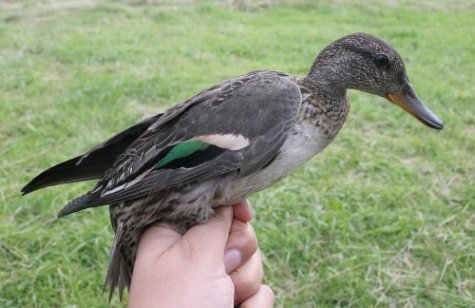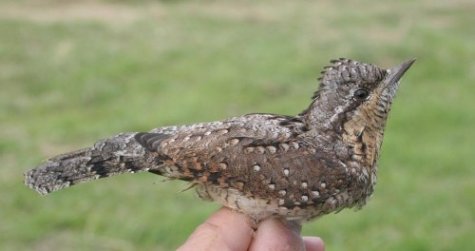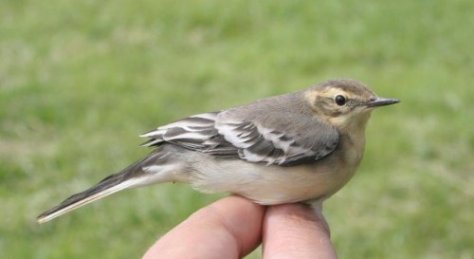Birder's diary - 12.08
Birder: Margus Ots, Linnuvaatleja.ee
Translation: Liis
Teal, also got a ring on its leg (11.08.2012 Pulgoja bird station)
I spent some days in Pärnumaa at the Pulgoja bird station ringing birds. The north-easterly wind of the last days set the birds moving and in addition to the reed warblers all kinds of other species strayed into the nets placed in the reeds: whitethroats, grasshopper warblers, willow warblers, swallows, yellow wagtails, flycatchers, whinchats, bearded tits, reed buntings and others.
Neck-winging wryneck (11.08.2012 Pulgoja bird station)
We caught a citrine wagtail (Motacilla citreola) and a wryneck (Jynx torquilla) and even several bluethroats (Luscinia svecica) as more exciting species. In the large-meshed „raptor net“ we got a teal (Anas crecca), that however escaped the cooking pot and instead got a ring on its leg. This year nearly 3000 birds have been ringed at Pulgoja.
The yellow-headed male of the citrine wagtail is easy to identify (19.05.2007, Aardla polder)
The citrine wagtail (Motacilla citreola) that was ringed on Saturday was a juvenile and it is not the easiest task to distinguish it from the common yellow wagtail. The wagtails generally get into the net late in the evening dusk when seeing the colours is difficult and it is easy to go wrong on identification. So it happened at the first find of the citrine wagtail in Estonia.
Young citrine wagtail. It can be distinguished from a juvenile yellow wagtail by more grey upper parts, broader wing streaks and the yellow ring surrounding the ear area (11.08.2012 Pulgoja bird station)
In 1991 a male citrine wagtail nested at Pulgoja in a mixed pair together with a common yellow wagtail (Motacilla flava) female. When the bird was finally caught it turned out as a great surprise that it already had a ring on the leg. Investigation showed that the bird had been ringed one year earlier (21.07.1990) at the selfsame Pulgoja station as a young yellow wagtail. The possibility that a citrine wagtail also might be an option was not even thought of and since the juveniles of both species are similar a mistake was made at identification that is for ever registered in our birdwatching annals.












